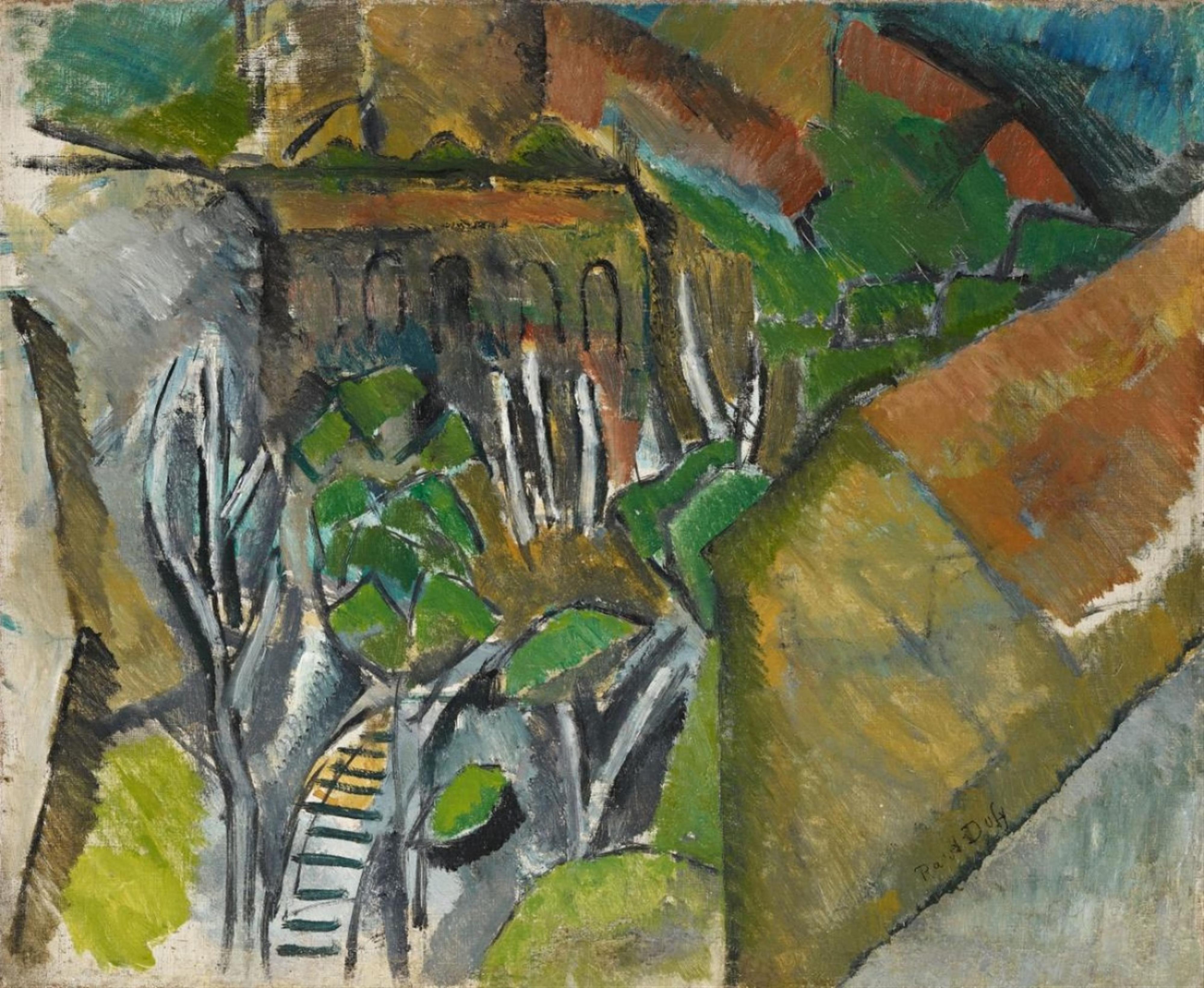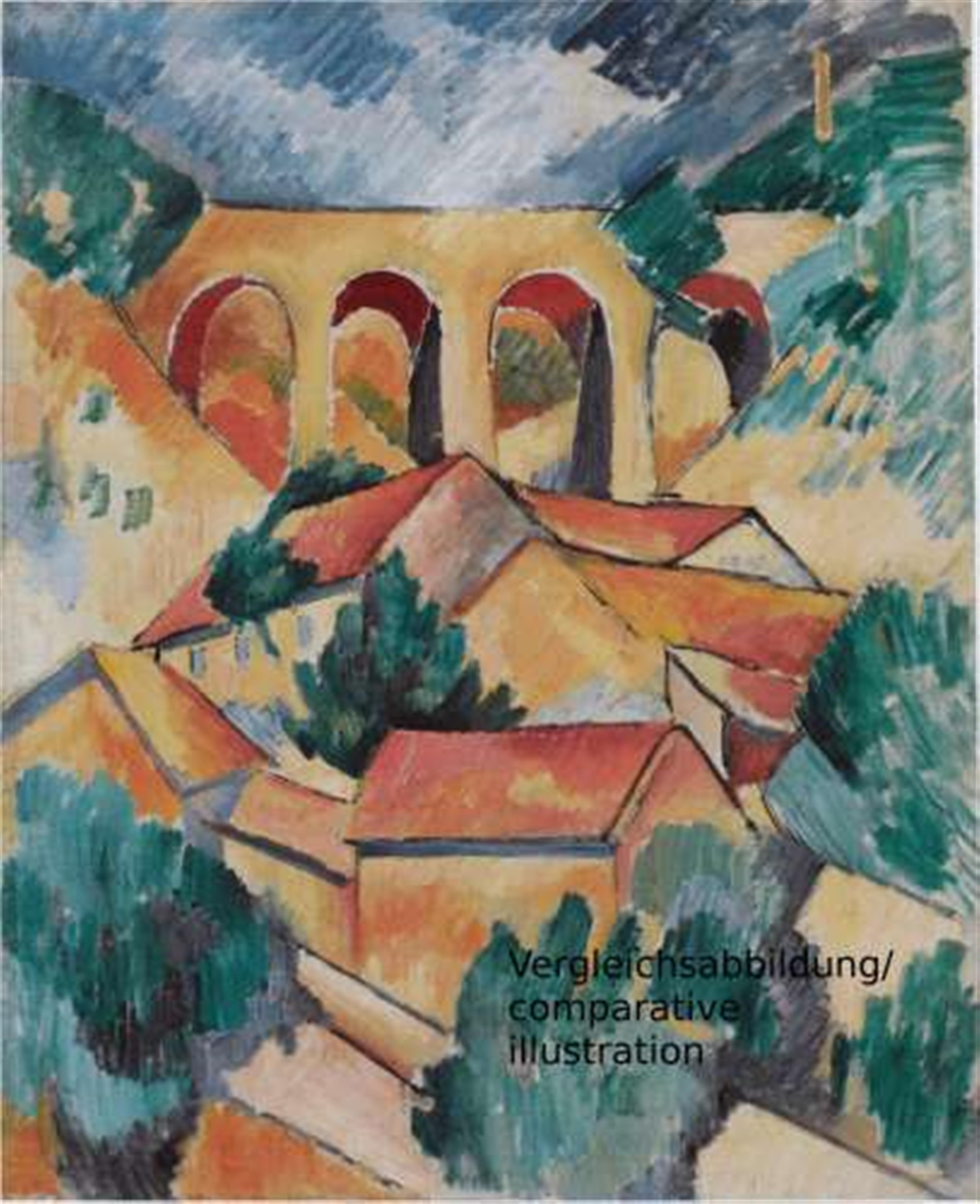Oil on fine canvas 38 x 46.2 cm, framed. Signed "Raoul Dufy" in black within composition to lower right. - Verso with traces of old paper labels on frame. - Outer edges of the canvas with old relining. Minimal, pinpoint-sized losses of colour in places.
Lafaille 366
Raoul Dufy, who was really a French Fauvist of the first hour, changed his artistic vocabulary of form after 1907. The year 1908, when he stayed at L'Estaque in the south of France, holds the key to the emergence of the Cubist landscape in the history of art. This is where a number of highly unusual landscapes were created under the influence of the re-interpreted art of Cézanne. The new development was initiated above all by Georges Braque and Pablo Picasso. The colour range of these painters seems reduced to almost monochrome shades, the colours are devoid of any emotive values. The major emphasis is on construction, while figurative forms are rendered in an abstract, cubic manner and the paint is applied in rhythmic patterns. The two painters Georges Braque and Raoul Dufy worked side by side while they were in L'Estaque in 1908. In the autumn of the same year, when Braque was exhibiting his new works at Kahnweiler's gallery in Paris, the critic Vauxcelles expressed himself rather negatively about him: “Braque méprise la forme, réduit tout, sites, figures et maisons, à des schémas géométriques, à des cubes.” (Quoted in Exhibition Catalogue, Georges Braque, Kunsthaus Zürich 1953, p. 12).
“Interesting are the landscapes which Dufy painted in 1908, when he spent the summer with Braque in the south of France. Despite a large number of compositional correspondences, which are highly detailed and concern the colours in particular, Dufy's views put a far greater emphasis on a wide, planar development and are less three-dimensional. Both are, as it were, directly in touch with their subject-matter. Picasso's view is rigorous and absolute, and the impressions he receives in the open air are transformed by him into an abstract concentrate of that view.” (Andreas Franzke, op. cit., p. 99).
In this painting, however, Dufy does not entirely abandon the visual stimuli that come from colour contrasts and brightness values. Another characteristic aspect of his work can be found in certain graphic elements such as the use of black lines, sometimes fine and sometimes forceful, which accompany the structures and contours of his planes. The horizontal arches of a viaduct have simply been inscribed into the composition, and the lines of the track for a cable car - which gave rise to the name of this composition - tilts in a slight curvature towards the viewer between various vegetative forms: these inscriptions emphasise the relatively planar character of the composition and less the three-dimensional scale of piling abstract shapes (compare by contrast Georges Braque, “Le viaduc à l'Estaque” and “La terrasse à l'Estaque”, Massimo Carrà, L'opera completa di Braque, Milan 1971, nos. 23 and 31).
Catalogue Raisonné
Lafaille 366
Provenance
Formerly Gimpel Fils Gallery, London; Galerie Michael Haas, Berlin (acquired 1979, with confirmation), since then in North German private possession
Literature
cf. Andreas Franzke, Die Landschaft im Kubismus, in: exhib. cat. Kubismus, Künstler, Themen, Werke, 1907-1920, Cologne 1982, p. 93 ff.
Exhibitions
Geneva 1960 (Galerie Motte), Auction Oct. 1960, no. 234 with illus.; London 1964 (Christie, Manson & Woods), Important Impressionist and Modern Drawings, Paintings and Sculpture, 27 Nov. 1964, no. 84 with illus.; London 1970 (Sotheby & Co), Impressionist and Modern Paintings and Sculpture, 1 July 1970, no. 34 with illus. ("L'Estaque" with provenance Bernheim-Jeune, Paris, Gimpel Fils, London and the exhib. ref. "London, Gimpel Fils, Autour du Cubisme, 1957, no. 6"); Cologne 1982 (Kunsthalle Köln), Kubismus. Künstler, Themen, Werke, 1907-1920, cat. no. 35 ("Die Seilbahn" (The cable car)) with illus. p. 188




